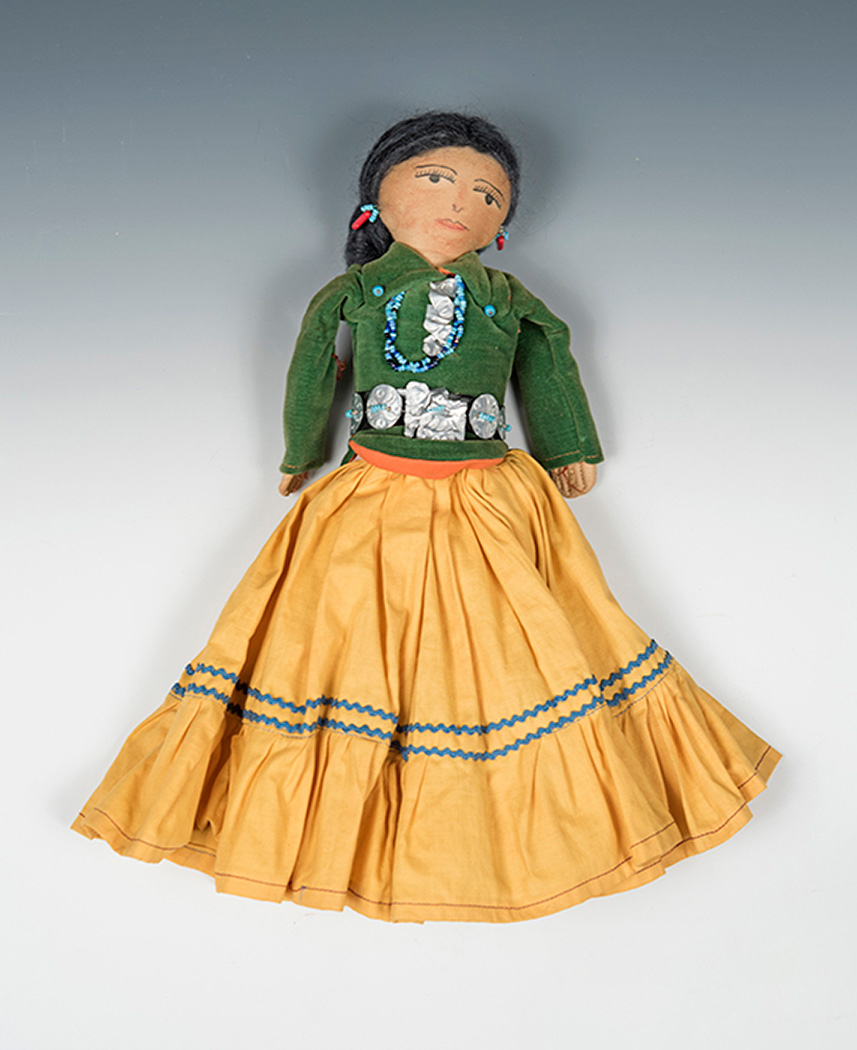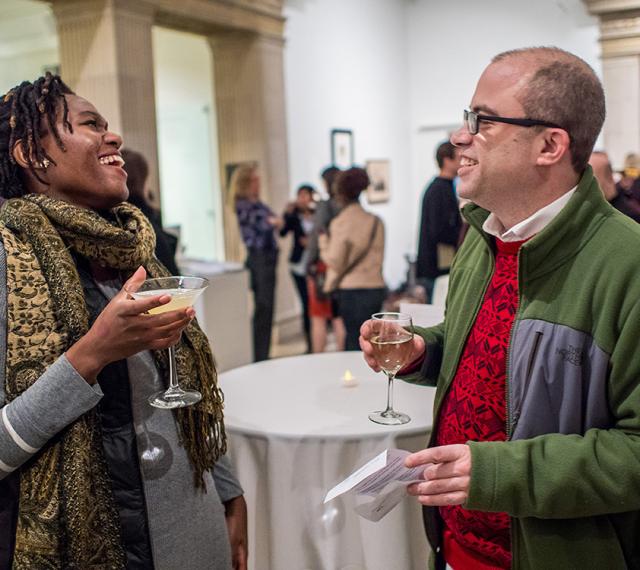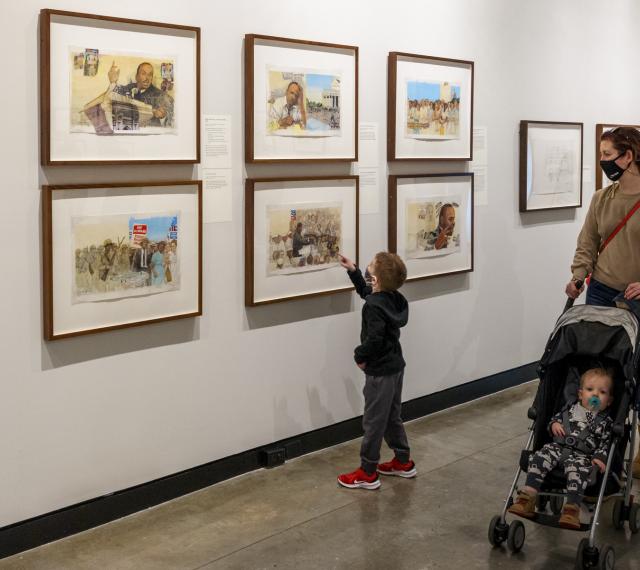This doll, made by a Diné (Navajo) artist in 1941, is wearing customary Navajo attire that reflects cross-cultural histories of dress.
During the imprisonment of Navajo people by the U.S. government at Bosque Redondo, New Mexico, in the 1860s, assimilative policies nearly eliminated Navajo use of handwoven textiles as garments. Diné women began adapting Euro-American wrapper dress styles with full skirts into a new look that expressed Navajo values and artistry: a velveteen blouse with silver buttons paired with a floor-length tiered skirt, as seen above. The doll is also wearing a silver and “turquoise” concho belt and necklace. By 1910, this look became widespread for Navajo women.
By the 1920s, Euro-American women in the Southwest began to adapt this style for their own sportswear. In the late 1940s and 1950s—a time of rampant appropriation of Indigenous design ideas by U.S. industries in order to define an “American” identity distinct from Europe—a shorter, tiered, gathered skirt based on Navajo and other regional Indigenous dress became a national trend, conversant with Christian Dior’s New Look. This trend further evolved as rodeo or square dance attire.
With this doll, the artist is asserting hózhó (beauty, harmony, and balance) and the right to self-representation. The doll’s innovative dress style remains continuously adapted within Diné communities today, alongside a resurgence of woven textiles as wearable art and a sign of cultural pride.
Reference: Nancy J. Parezo and Angelina R. Jones in American Indian Quarterly, Summer 2009, p. 373–404.
Text Written by Laura Allen (Curator of Native American Art)
This work is not on view.




